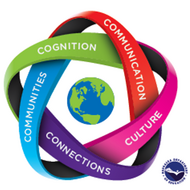German-Speaking Countries/Activities Off-The-Wall Activity
(View Complete Item Description)This OER Lesson plan/unit was created by Ashton Krueger as part of the 2023 World Language OER Summer work and training. Educators worked with NDE staff to create OER Learning Plans and materials. The attached Lesson Plan is designed for 9 - 12 World Language Arts teachers for Novice Mid-Learners of German. Students will work together with partners to share their travel interests, write sentences, evaluate their writing, and present their ideas and new learnings. Students will interpret flags, exchange information, negotiate meaning, edit errors, and discuss some cultural activities associated with each country.This Lesson Plan addresses the following NDE World Language Standard(s): NE WL Standards: 1.1, 1.2, 2.1.It is expected that this activity will take students 30 minutes to complete.
Material Type: Activity/Lab



















